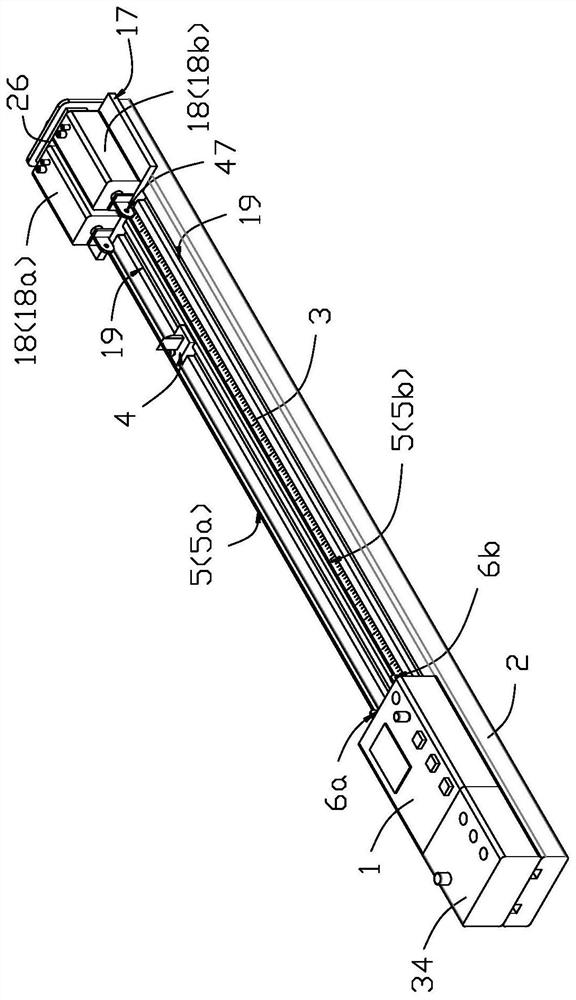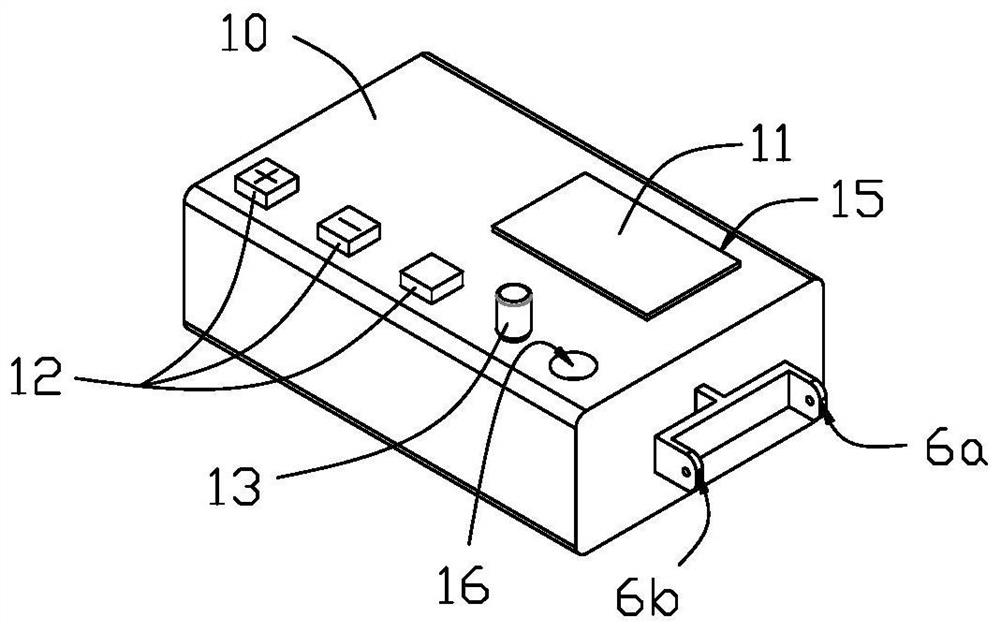A kind of standing wave experimental device and experimental method
An experimental device and standing wave technology, applied in the field of standing wave experimental devices for physical experiments, can solve problems such as poor repeatability, inability to observe standing wave phenomena, and non-persistence.
- Summary
- Abstract
- Description
- Claims
- Application Information
AI Technical Summary
Problems solved by technology
Method used
Image
Examples
Embodiment 1
[0107] Such as figure 1 and figure 2 As shown, this embodiment 1 describes a standing wave experimental device, which includes a vibration source 1, a horizontal slide rail 2, a horizontal scale 3, a sliding seat 4 with a slit knife edge, a string 5 and a string tension test mechanism.
[0108] Wherein, both the vibration source 1 and the string tension testing mechanism are located on the horizontal slide rail 2, and the two are respectively located at the opposite ends of the horizontal slide rail 2, for example figure 2 The left and right ends of the horizontal slide rail 2 shown in .
[0109] The function of the vibration source 1 is to generate incident waves. The incident waves generated by the vibration source 1 are divided into two identical paths. There are two output ports of the vibration source 1, which are respectively defined as 6a and 6b. Each incident wave passes through a Output output.
[0110] Such as image 3 and Figure 4 As shown, the vibration so...
Embodiment 2
[0197] like Figure 13 As shown, this embodiment 2 describes an experimental method for verifying the standing wave formula experiment, which is implemented based on the standing wave experimental device mentioned in the above embodiment 1. The experimental method will be described in detail below.
[0198] According to the wave theory, the wave equation between the parameters of the standing wave on the string is:
[0199]
[0200] Among them, λ is the standing wave wavelength, f is the standing wave frequency, μ is the linear density of the string, and T is the tension of the string.
[0201] like figure 1 Two reflection mechanisms with different structures are provided in , which are respectively the reflection mechanisms where the string 5a and the string 5b are located.
[0202] In the reflection mechanism where the string 5a is located, the incident wave with a frequency of f is reflected by the slit edge 21 to form a reflected wave, and the incident wave and the r...
Embodiment 3
[0212] like Figure 14 As shown, this embodiment 3 describes an experimental method for studying the establishment conditions of the wave equation, which is realized based on the standing wave experimental device mentioned in the above embodiment 1. The experimental method will be described in detail below.
[0213] According to the derivation theory of the one-dimensional wave equation, only when the disturbance of the wave on the string is very small, and the additional elongation of the string caused by the disturbance can be ignored compared with the original elongation due to the tension in the string, The wave equation can only be established.
[0214] This precondition is not mentioned in the prior art, and there is no relevant experiment to verify the supporting effect of this condition on the theory.
[0215] In this embodiment, the vibration source 1 is provided with an amplitude adjustment knob 13, which can set the amplitude of fluctuation.
[0216] By using the...
PUM
 Login to View More
Login to View More Abstract
Description
Claims
Application Information
 Login to View More
Login to View More - R&D
- Intellectual Property
- Life Sciences
- Materials
- Tech Scout
- Unparalleled Data Quality
- Higher Quality Content
- 60% Fewer Hallucinations
Browse by: Latest US Patents, China's latest patents, Technical Efficacy Thesaurus, Application Domain, Technology Topic, Popular Technical Reports.
© 2025 PatSnap. All rights reserved.Legal|Privacy policy|Modern Slavery Act Transparency Statement|Sitemap|About US| Contact US: help@patsnap.com



